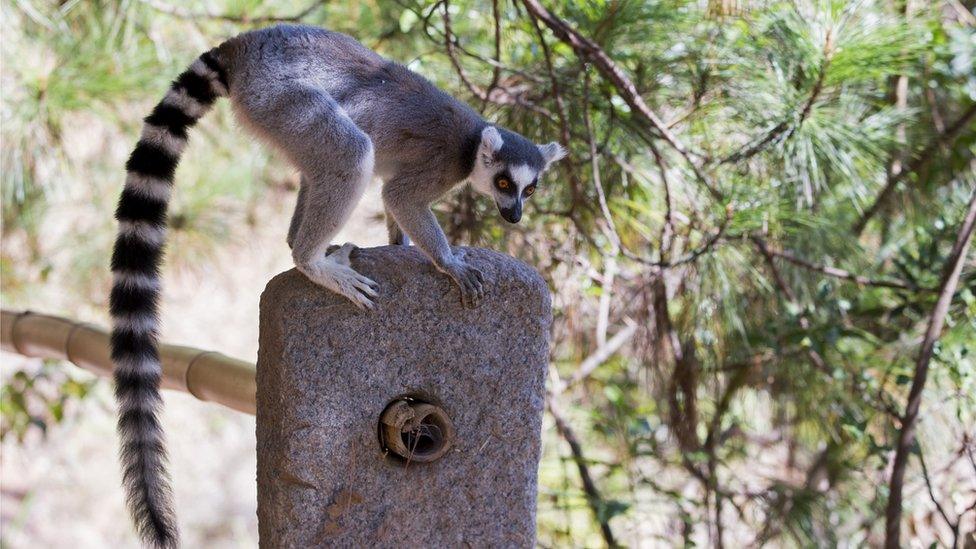New perspective on how lemurs got to Madagascar
- Published

All species of lemur are endangered
The lemurs of Madagascar are at the centre of a new mystery.
Scientists believe the story of how they arrived on the island is more complex than we thought.
After looking again at the fossil evidence, they question the idea that lemurs have been evolving in isolation on the island for 50 million years.
Finding out more about lemurs' ancient history could help conservation efforts.
A recent study found that almost all species of lemur face extinction.
"It deepens the mystery," Erik Seiffert of the University of Southern California, Los Angeles, told BBC News.
"It makes it even more important that we try to find out more about the evolution of this group and maybe with some perspective from the past, it will give us some information we can use in the present about how to protect these species."
What do we know about the evolution of the lemurs?
The conventional view is that lemurs arrived in Madagascar 40-50 million years ago, long after it became an island.
It's thought they floated over from the African continent on rafts of vegetation.
Lemurs didn't have any predators on the island, so they spread rapidly and evolved into many different species.
This is why lemurs are now found only on the island and not all over Africa.
Why do some scientists think differently?
Researchers in Africa and the US have looked again at fossils discovered some years ago.
One is a fossil dating back 20 million years that was unearthed in Kenya in 1967. Named Propotto, it was said to be a new species of primate.

The aye-aye of Madagascar has a special thin middle finger
This idea was quickly challenged, and the animal was re-classified as a type of fruit bat.
The other fossil, found in Egypt, is of a primate that lived 34 million years ago, known as Plesiopithecus.
Both fossils are incomplete, made up of little more than bits of jaw bones and some teeth.
The researchers believe the original classification of Propotto is correct. And they think both fossils are ancient primates related to the aye-aye, a particularly strange looking lemur that is still alive today, but is on the brink of extinction.
"Connecting enigmatic fossils from Egypt and Kenya with the modern aye-aye helps to reveal greater complexity in the arrival of Madagascar's fauna than previously appreciated," says Dr Nancy Stevens of Ohio University, Athens, US, who worked on the study.
How does the new research change current thinking?
It completely overturns our ideas about when and how lemurs arrived in Madagascar.
The scientists suggest the ancestors of today's lemurs colonised the island not once, but twice, and much later than we thought - perhaps around 20 million years ago.
The aye-aye arose from one line, while other lemurs came from the other.
According to Erik Seiffert, the new theory "up-ends" the "very romantic idea" that lemurs made it to Madagascar very early on - and were there all by themselves during that time.

The aye-aye is endangered due to loss of its forest home
Will this new theory convince everyone?
The short answer is no. It is likely to lead to more debate.
Facts about the aye-aye
Aye-ayes are the largest nocturnal primates in the world, living mainly in forest canopies
It uses its long finger to pull grubs out of branches
It is an endangered species because its habitat is being destroyed and due to native superstition
The scientists say confirmation rests on finding more fossil evidence. There is a huge gap in the fossil record from the island.
"It's a broken record with palaeontologists - we always have the same answer - but we really need more fossils," says Prof Seiffert.
It is possible specimens may already exist filed away in drawers in museums, waiting to be re-examined, he says.
Dr Stevens adds: "Remarkable discoveries await in the deepest forests, the most remote deserts, and in corners of museum cabinets the world around."
Follow Helen on Twitter, external.